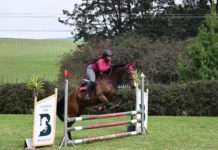- During the 1990s, in Colombia’s Meta region, paramilitaries and guerrilla groups fought a bloody civil war. A main driver of conflict was the struggle for land. Wealthy elites, resisting popular demands for land reform, took violent control of large areas to breed cattle and grow cash crops for export.
- Meanwhile, a peasant university in Meta, established against the backdrop of the civil war, taught the rural population a different way of farming: offering up skills for living in peace with each other and in harmony with nature. Farmer and agronomist Roberto Rodríguez led the way.
- More than 7,000 students from all over Colombia have taken classes at La Cosmopolitana Foundation and spread its philosophy of sustainable, diversified agriculture, even influencing Amazon Indigenous groups. Nearly 200,000 people globally have witnessed La Cosmopolitana’s work in person.
- Several foundation graduates now live in the town of Lejanías, in a rural community they’ve transformed into Colombia’s “capital of abundance.” Here, farmers grow sustainably, sell locally made goods at a weekly organic market, and offer popular ecotours and accommodations at their farms.
LEJANÍAS, Colombia — The view from Simey Sierra’s terrace is breathtaking: On the left, a rugged massif rises, with peaks shrouded in dark blue rain clouds. Straight ahead, beyond a guitar-shaped swimming pool, lush green coffee hills stretch to the horizon, fading at right into a sun-drenched plain. A wide river meanders across the scene.
This day, a rainbow spreads its vibrant colors. “Beautiful, isn’t it?” muses a Colombian peasant farmer. “But believe me, for many years I didn’t notice it. Half of my life, all I’ve had in mind was how to escape this place and its violence and poverty.”
Sierra’s hometown of Lejanías in Meta province, central Colombia, sits at the intersection of the Andes Mountains, the Orinoco River and the Amazon Rainforest — a biodiverse paradise for biologists and nature lovers.
But the area was also a bitterly contested theater of war for five decades.
“Over there, the governor was kidnapped by the FARC guerrillas, directly from a U.N. vehicle,” Sierra tells us, pointing with his strong, suntanned hand into the valley, to a narrow bridge over the Guape River.
“And in the next town was the headquarter of the paramilitaries. They collected protection fees from cattle breeders and tolls from the farmers who transported their goods to the capital Bogotá,” he remembers. Those who did not pay were kidnapped.
Rich entrepreneurs fled, and the local economy collapsed. Small farmers like Sierra were left behind, at the mercy of the warlords. He, like many others, was forced by the guerrillas to grow coca bushes and produce coca paste — the precursor of cocaine. The resulting drug money was the catalyst of this, the longest war in the Americas.
For 50 years, there was hardly any chance for Colombia’s peasants to escape a conflict that was fought on their backs. Their children were recruited by armed groups, family members were abducted, murdered or displaced, and their land stolen by preying elites.
Statistics reflect the magnitude of suffering: More than half a million Colombians died or disappeared, and 7 million were displaced. Eight million hectares (20 million acres) of land changed hands by force.

A new start after half a century of war
For years, Sierra couldn’t even visit his finca, his farm on the outskirts of Lejanías, because the military had built an outpost opposite his property. “I would have fallen inevitably under suspicion of being a spy in the eyes of the FARC commanders,” he says. Mutual suspicions were the order of the day.
For many years, he survived by working daily at other people’s farms, moving around constantly, avoiding talk with strangers.
Today, the 51-year-old is back on his land and proudly presents himself as a tourism entrepreneur and a peace seeder. “I changed my chip inside!” he jokes, tapping his head.
For the first time in decades, Sierra feels he is in control of his destiny. Of course, this is partly due to the peace agreement reached between the Colombian government and the FARC guerrillas in 2016. But it also stems from La Cosmopolitana Foundation, a peasant university founded in 1998 in Meta’s capital, Villavicencio. It’s course offerings prepared Colombia’s battered rural population for a time after the civil war ended, teaching them how to farm — and importantly, think — in a new, sustainable way.
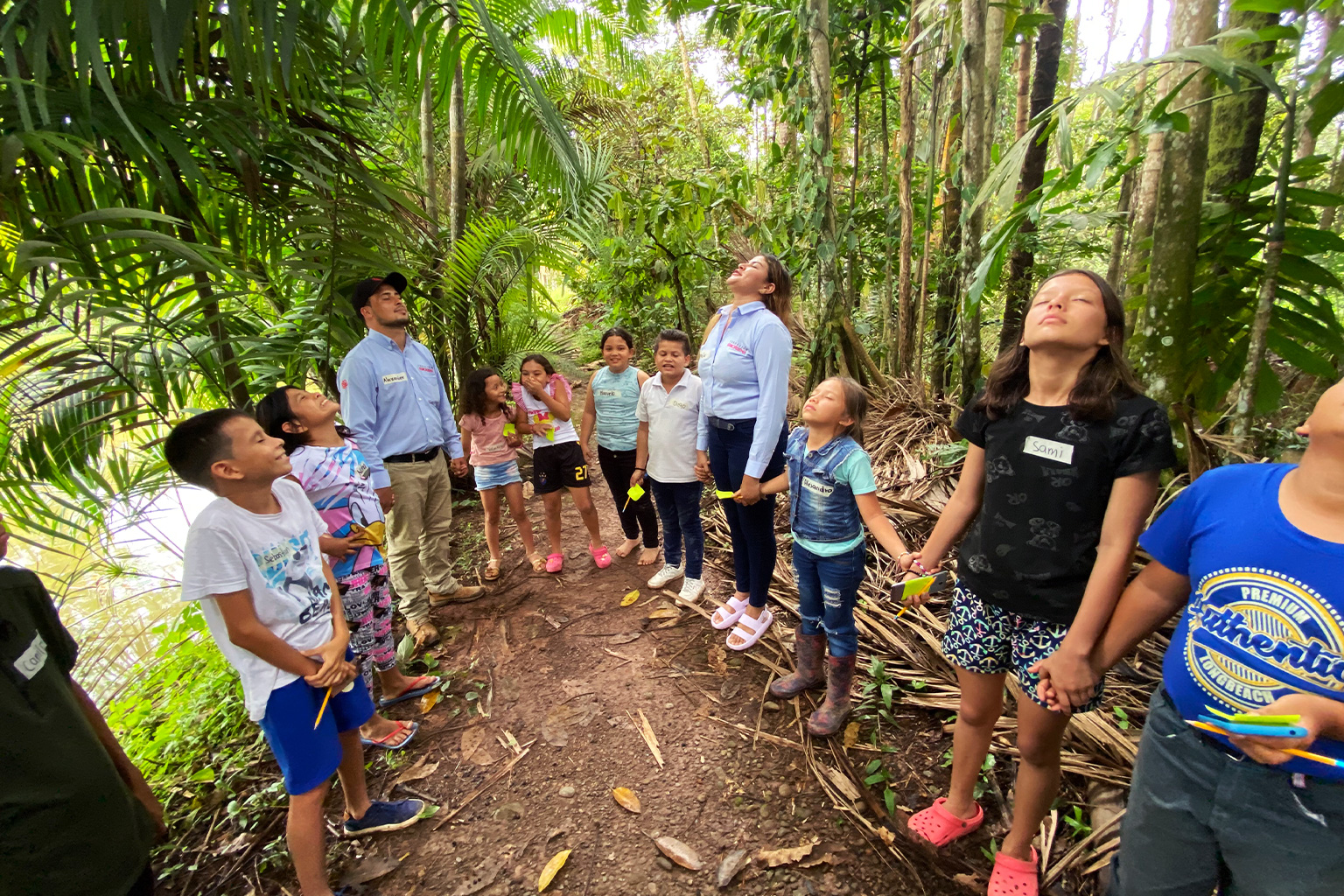
The secret of Cosmopolitana’s philosophy: Lower production costs by working with, not against, nature, while maximizing output by processing commodities within the community (creating added value), and ultimately fostering a local circular economy based on cooperation. These lessons run counter to the industrial export agricultural model long favored by private investors and the government.
But bringing this model into reality wasn’t easy: When peace finally came, implementation challenges arose for this small-scale, sustainable, rural cooperative economy.
Perhaps first among those challenges: The immediate needs of a country that had invested practically nothing in its infrastructure for half a century were enormous, and the most immediate reconstruction efforts were centralized in heavily populated urban areas.
The capital, Bogotá, and a handful of other cities like Medellín, Cali and Cartagena, concentrate resources and the economic elite. So after the civil war, priority was almost always given to large-scale projects that quickly brought a lot of money into state coffers, with the focus almost always on mining, oil, industrial agriculture, and highway construction.
Rural communities had to make their own way as they rebuilt their lives.
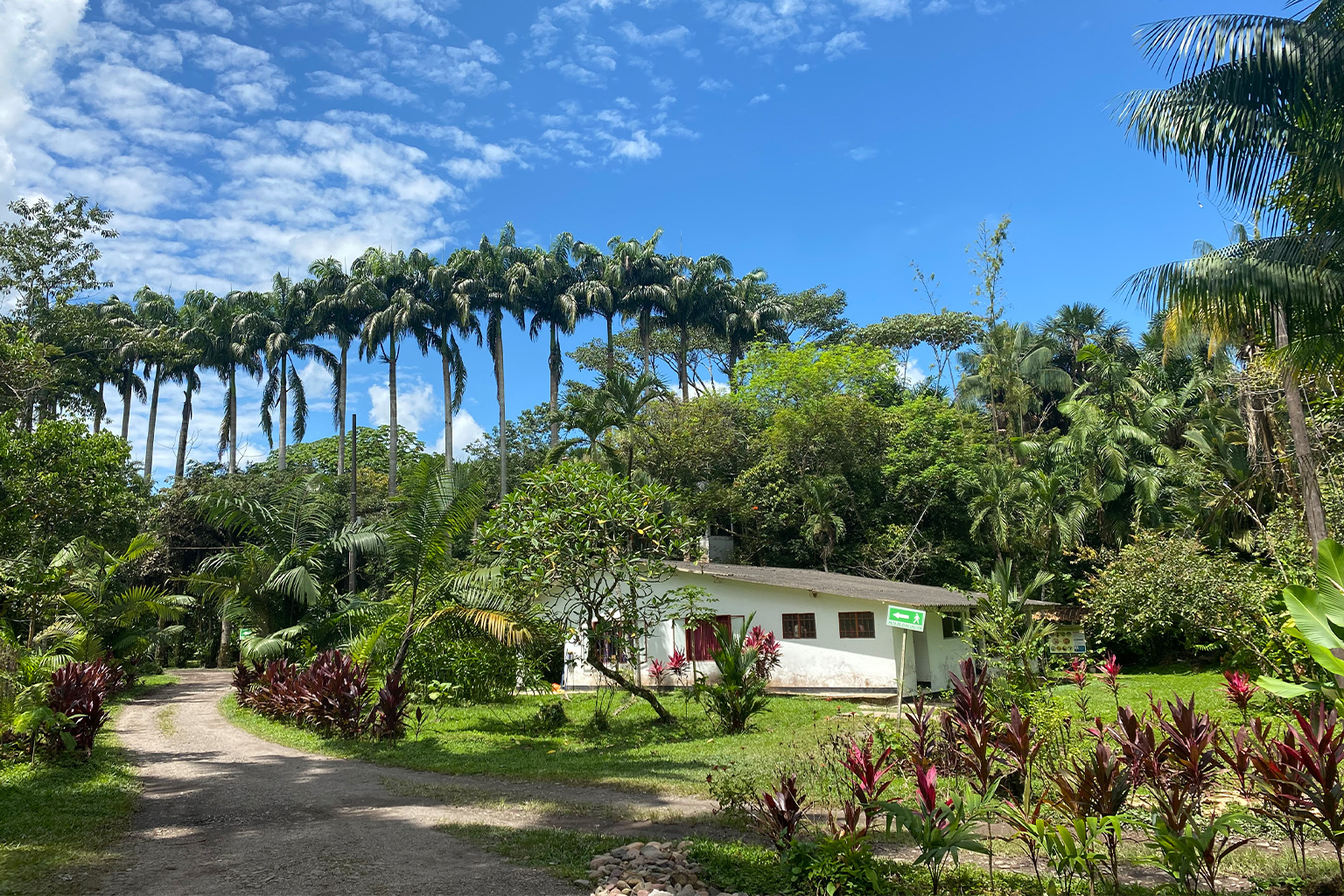

Creating a model farm
“Small farmers are secondary for the state,” says Roberto Rodríguez. The thin, agile 64-year-old is the founder and soul of La Cosmopolitana Foundation. An agronomist, he’s been working with global development organizations for years, attending international workshops, holding dialogues with environmentalists, and discovering the organic farming model that was evolving in 1980s Europe.
In 1998, together with his German wife, Monika Hesse, he bought a 29-hectare (72-acre) cattle ranch outside Villavicencio. Rodríguez still has photos from that time, showing a flat, degraded grassland. But the now-divorced couple had a vision then: They wanted to convert their property into a model for tropical organic farming, based on plant associations and agroforestry — enhancing soil fertility and biodiversity naturally.
And they also wanted to teach others what they learned, instead of copying a capital-intensive industrial model based on monocultures, synthetic fertilizers and pesticides.
Today, La Cosmopolitana is a verdant wonder that works according to regenerative principles: On a visit there we found free-range chickens, an edible forest, a fish and swimming pond, a medicinal herb and vegetable garden, and a bustling kitchen where local products are creatively processed for future sale. During the day, toucans and parrots fly from tree to tree, and at sunset, the frog concert is delightfully deafening.
Rodríguez is an enthusiastic missionary for sustainability and organic farming. “Our method of cultivation is the better one,” the book author is convinced, “because it creates wealth, diversity and variety, while industrial agriculture impoverishes the soil, the people and nature.”
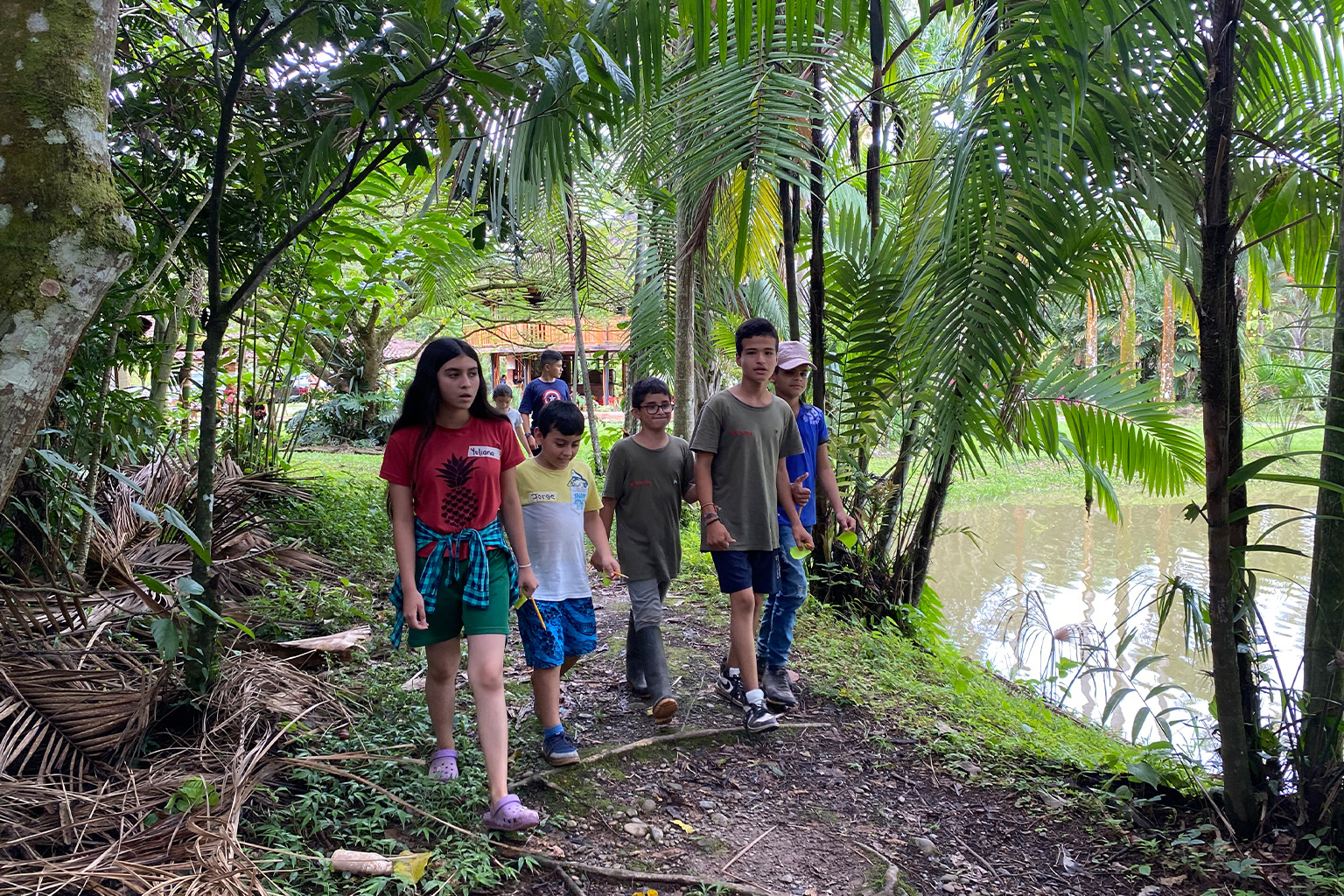
Learning the art of transformation in a ‘living classroom’
As a farmer’s son, Rodríguez knew from the start how hard it would be to convince other farmers to give up their old ways for something new. So he experimented with a new pedagogy that focused on helping people see the world through different eyes.
“We have to overcome the colonialism that has been drilled into us that we are poor,” explains Rodríguez, who today advises international bodies such as the U.N.’s Food and Agriculture Organization (FAO). His method, called aula viva (living classroom), focuses on interactive learning and group dynamic games taught in nature.
Participants in his workshops are split into groups: They have to think about what scarcity and abundance mean for themselves and how they are generated. Early on, they participate in a tug-of-war game that illustrates both competitive and cooperative behavior. The goal is to reframe the dominant idea of industrialized development, with its clear winners and losers.
Students also have to bring something grown on their home farms to the workshop. These edible products are then arranged on banana leaves, forming a colorful mandala playing up local abundance. Then it’s all cooked up and converted into delicious dishes. And perhaps most importantly, shared among the participants.

These activities open their eyes to the value of local partnerships. The next day, this collaborative methodology is put into action with a group project, the creation of a forest garden, for example.
These teachings are “not only about different forms of agriculture but also about the force of cooperation,” explains Rodríguez, who adds a few words with strong emphasis: “I no longer think of myself as being poor!”
The hope and goal is that others will have this same liberating revelation.
Rodríguez got his first chance to put these teaching techniques and curriculum into practice on a large scale in 2007, when the government resettled 240 civil war-displaced peasant families on a cattle farm that the state had confiscated from a drug dealer.
The farm was in the southern part of Meta, along a highway, with each family given 25 hectares (62 acres) to farm individually. “But the soil was poor, dried out by the wind. And we had neither machines nor seeds. We had to beg on the highway to survive,” remembers Ninfa Daza, a farmer who belonged to the group.

“I suspect the state only wanted to fulfil its duty pro forma,” says Rodríguez. There were plans to release the land later for the cultivation of oil palm to make biodiesel. But the politicians didn’t count on Rodríguez and his vision.
He came upon the hardscrabble farm families first during a visit to the region, and immediately jumped into action. First, he scrounged around for a tractor to plow up half a hectare (1.2 acres) of bone-dry soil on each family’s home plot to grow staple crops. The families then planted small trees around their field to create windbreaks. They created small gardens to grow fruit and vegetables. Then came chickens and pigs, which offered eggs, meat and manure to revitalize the worn-out soil.
Perhaps most critically: every step was accompanied by workshops at La Cosmopolitana.
“Two years later, we had more than enough to eat. I could even cook and sell jam and exchange my product for others in the village,” Ninfa Daza says. The psyche of the families also was transformed: “When the investors came and offered to buy our land, we turned them down.”
Daza now sees the world with new eyes, echoing Rodríguez: “I no longer think of myself as being poor!”

From scarcity to abundance
Anyone can attend classes at La Cosmopolitana; there are even courses for children. The lessons are subsidized by national and international NGOs, ranging from the German catholic organization Misereor, the Colombian Fundación Caminos de Identidad (Fucai), to the local Rotary Club. As a result, everyone can afford to attend, paying just a small fee.
Over time, La Cosmopolitana has grown. It now boasts two dozen or more staff and lecturers. The foundation receives workshop requests from all over Colombia and from other countries too.
Many courses take place in the Amazon, where Indigenous peoples (thanks to the inspiration and guidance of the living classroom) are now returning to their ancient cultivation methods, rotating forest gardens, for example, instead of imitating the environmentally damaging slash-and-burn techniques of European colonial farmers.
More than 7,000 students have completed courses over recent decades, while almost 200,000 people from around the world have witnessed La Cosmopolitana’s work in person. Many have written congratulations and reflections in the guest books Rodríguez keeps in his office.
His goal is to be an inspiration, not just a model. That’s because, unlike in industrial agriculture, there are no patent recipes in organic farming to follow. Every finca is different, every person different, he says.
Participants first must become fully aware of their own unique situation and then draw up a life plan that includes their family. Then they implement, step by step, the pragmatic changes needed to put agroforestry principles into practice. Maybe bees come to the finca to pollinate crops, or cattle graze under newly grown fruit trees, as croplands and forest merge in a productive whole. Nature cooperates as the people do.

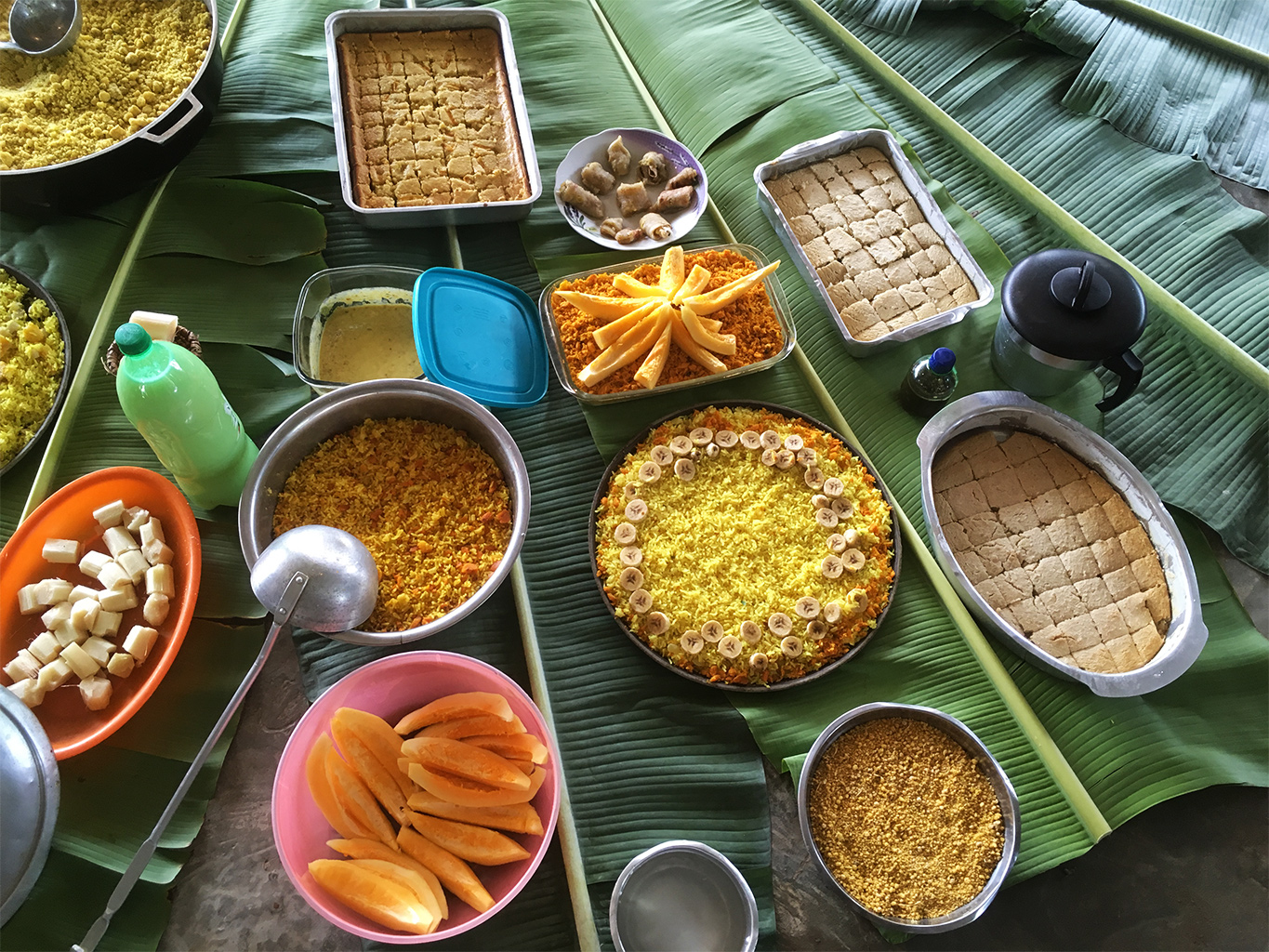
All you need is creativity
“Many think you need money or help from the state to implement changes,” Rodríguez says. “But actually, all you need is creativity.” Credit is hard to come by for small farmers in Colombia, and interest rates are high. So La Cosmopolitana participants learn to value, and work with, what they have.
In Simey Sierra’s case, what he had was a fabulous view from his finca, coupled with his personal hospitality, charisma and natural musical talent — especially his tuneful playing of the cuatro, a four-stringed guitar popular in the region.
“I originally had cows,” Sierra tells us. “But that brought little profit and was labor-intensive. At La Cosmopolitana, I came up with the idea of tourism.”
He sold the cows and built four guest rooms. He added the guitar-shaped pool and a roofed space for events such as weddings or birthday parties. Suddenly his finca became a popular recreational destination for townsfolk and eventually tourists.
“At La Cosmopolitana, I realized that you have hands to shape your dreams,” he says.
Sierra inspired others: Neighbor Cristina Ospina opened a restaurant, while her sons organize tours to the nearby Güejar River Canyon. Juan Pablo Zárate, now a teacher at La Cosmopolitana, runs an ecological coffee finca; it boasts its own electricity, water supply and sewage system, and sells Zárate’s own brand of coffee; he also organizes bird-watching tours. Esneyder Rojas, age 25, returned from Bogotá during the COVID-19 pandemic to his parents’ nearly abandoned farm, reforested the land, and now produces honey there. His wife, Dunya, 21, sews clothes for the neighborhood and sells them at the weekly market. They all learned at La Cosmopolitana and see themselves as a community, not as competitors.

A stronghold of sustainability
Together, these neighbors recognized their unique talents and the attributes of their land to became a movement. Over time, they converted Lejanías, a town of 10,000 inhabitants, into “the capital of abundance.”
They organized a regular farmers’ market that particularly proved its worth during the pandemic, and made the local economy more circular and crisis-resistant.
Young people were impacted too. They no longer post selfies from the town mall, but pose in front of the region’s waterfalls. They created a Facebook page that soon attracted visitors from Bogotá, 240 kilometers (150 miles) away.
For Rodríguez, Lejanías is a living example of his successful strategy. “Being a farmer is not a punishment, but a gift!” he exclaims. His pupil, José Zárate, a former lecturer at La Cosmopolitana, has even carried the movement’s ideas into politics — Zárate was nominated Meta state’s agriculture minister in 2022.

Banner image: Harvesting the abundance of the Amazon, and extinguishing the mentality of poverty. Image by Sandra Weiss.
See related coverage here at Mongabay:
Ecuador project aims to protect Yasuní park borders & Indigenous peoples
FEEDBACK: Use this form to send a message to the author of this post. If you want to post a public comment, you can do that at the bottom of the page.
This story first appeared on Mongabay
South Africa Today – Environment
This article is licensed under a Creative Commons Attribution-NoDerivatives 4.0 International License.
You may republish this article, so long as you credit the authors and Mongabay, and do not change the text. Please include a link back to the original article.


